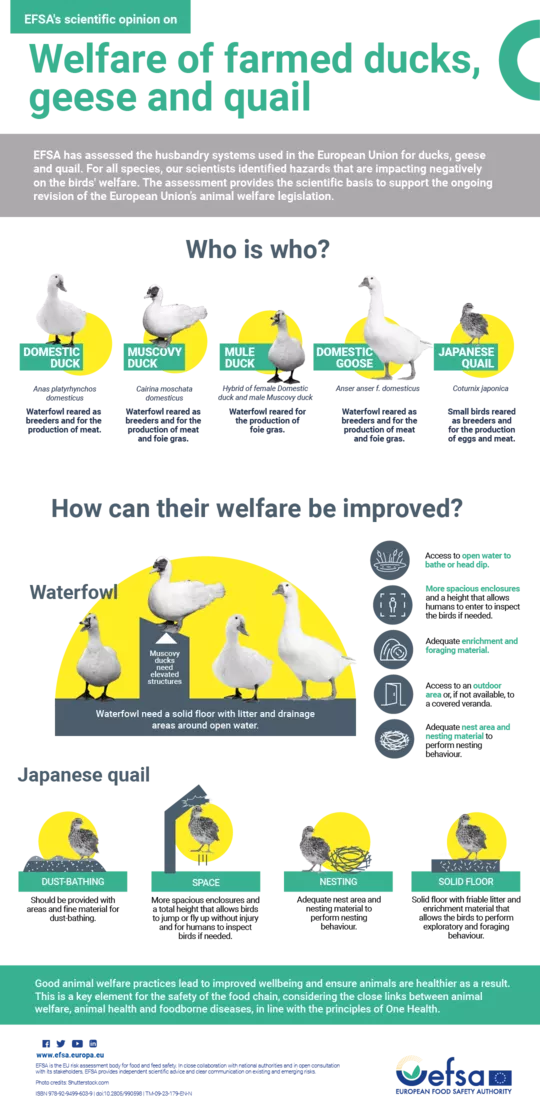Welfare of farmed ducks, geese and quail


EFSA has assessed the husbandry systems used in the European Union for ducks, geese and quail. For all species, our scientists identified hazards that are impacting negatively on the birds' welfare. The assessment provides the scientific basis to support the ongoing revision of the European Union’s animal welfare legislation.
Who is who?
Domestic duck
Anas platyrhynchos domesticus
Waterfowl reared as breeders and for the production of meat.
Muscovy duck
Cairina moschata domesticus
Waterfowl reared as breeders and for the production of meat and foie gras.
Mule duck
Hybrid of female Domestic duck and male Muscovy duck
Waterfowl reared for the production of foie gras.
Domestic goose
Anser anser f. domesticus
Waterfowl reared as breeders and for the production of meat and foie gras.
Japanese quail
Coturnix japonica
Small birds reared as breeders and for the production of eggs and meat.
How can their welfare be improved?
Waterfowl
Waterfowl need a solid floor with litter and drainage areas around open water.
Muscovy ducks need elevated structures.
- Access to open water to bathe or head dip.
- More spacious enclosures and a height that allows humans to enter to inspect the birds if needed.
- Adequate enrichment and foraging material.
- Access to an outdoor area or, if not available, to a covered veranda.
- Adequate nest area and nesting material to perform nesting behaviour.
Japanese quail
Dust-bathing
Should be provided with areas and fine material for dust-bathing
Space
More spacious enclosures and a total height that allows birds to jump or fly up without injury and for humans to inspect birds if needed.
Nesting
Adequate nest area and nesting material to perform nesting behaviour.
Solid floor
Solid floor with friable litter and enrichment material that allows the birds to perform exploratory and foraging behaviour.
Good animal welfare practices lead to improved wellbeing and ensure animals are healthier as a result. This is a key element for the safety of the food chain, considering the close links between animal welfare, animal health and foodborne diseases, in line with the principles of One Health.